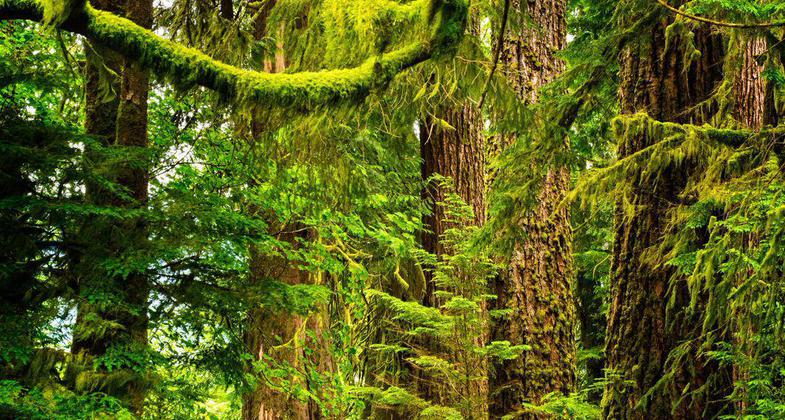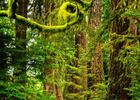Quinault Loop Trail
check with the trail manager for updated details before visiting.
Quinault Loop Trail
USDA Forest Service
Backcountry Trail
- Length
3.9 miles
- Elevation Gain
--
- Route Type
out & back
(1 review)
- Length
3.9 miles - Elevation Gain
-- - Route Type
out & back
This popular loop trail provides access along the South Shore of Lake Quinault and extends into the Quinault Rain Forest (140-160 inches annual rainfall)
Location: T23N, R9W, Sec. 20, In Olympic National Forest, east of Lake Quinault, just off U.S. Highway 101.
- States: Washington
- Counties: Grays Harbor
This popular loop trail provides access along the South Shore of Lake Quinault and extends into the Quinault Rain Forest (140-160 inches annual rainfall). Large conifers (Sitka Spruce, Douglas-fir, Western hemlock, and Western red cedar), lush understory of vine maple, devils club, and ferns are major attractions. The trail connects two campgrounds, Rain Forest Nature Trail, and the Lake Quinault Lodge Resort. One of the best trails on the Olympic Peninsula to see the temperate rainforest.
Accessibility Information
No text provided.
Reviews
Karen Lucius
Dripping in sheets of emerald
I was an adult before I found out about temperate rainforests and planned our trip to the Ho, but stumbled across the Quinault and it breathtaking, - an lush, verdant green , enchanted landscape that began near a cobalt blue lake. Our son and 5 year old grandson came with us from the high desert plateaus of New Mexico and the dry, flat high plains of Texas to a place that was unlike anything we'd seen or imagined. The trail was easy to navigate, naturally lined with huge ferns and fascinating mushrooms of all sizes, shapes and colors growing on the forest floors and emerging from fallen logs. Thick layers of green mosses hung like curtains from branches above and around us, making sunlight scarce and spotty that made the summer seem like early spring and made us grateful we'd brought our hoodies along"just in case". The area receives so much rain and the ground so saturated that seeds often rot before they're able to take root unless they land on a fallen log, which becomes known as a nurse tree, providing necessary nutrients as the moss and mushrooms break down the wood to make them accessible to tiny seedlings, taking root in rows the length of the nurse tree. As the seedlings root descend over the trunks, they lengthen and strengthen, so that the original fallen tree decomposes beneath them and the living trees look like a forest of timber ready to pull their roots from the soil and begin marching toward civilization to take back the Earth. The sounds of birds, the occasional rustle of the leaves above the sounds of insects and water dripping an flowing through the forest are all that's heard in the quiet and serenity of the place. (Except for the quiet oohh's and aaahhh's of visitors who tend to speak quietly almost in whispers, as though they were in a great library, museum or cathedral. The visit was an amazing experience to share with each other and a spiritual experience with nature. It was well worth the trip and photos still line our walls to remind us of the value and joy that comes from leaving the crowds and responsibilities and feeling a oneness with Mother Earth! Just go! You won't be sorry!!
Allowed Uses:
Boating, motorized Hiking/WalkingOther Activities
- Camping
- Wildlife viewing / observation
Public Contact
Molly EricksonOlympic National Forest
Pacific Ranger District
Forks, WA 98331
[email protected] • (360) 374-6522
www.fs.fed.us/r6/olympic
Contact the trail manager for current maps and visiting details.
More Details
- Elevation (low): 200
- Elevation (high): 450
- Elevation (cumulative): --
- Part of a Trail System? No
- Surface (primary): Rock, crushed
- Surfaces (additional): Rock, crushed, Soil
- Tread Width (average): 30"
- Tread Width (minimum): --
- Running length (minimum): --
- Tread Grade (average, percent): 5
- Tread Grade (maximum): 10
- Running length (maximum): --
- Cross-slope (average, percent): --
- Cross-slope (maximum): --
- Running length (maximum): --
- Certified as an NRT
Feb 6, 1979


